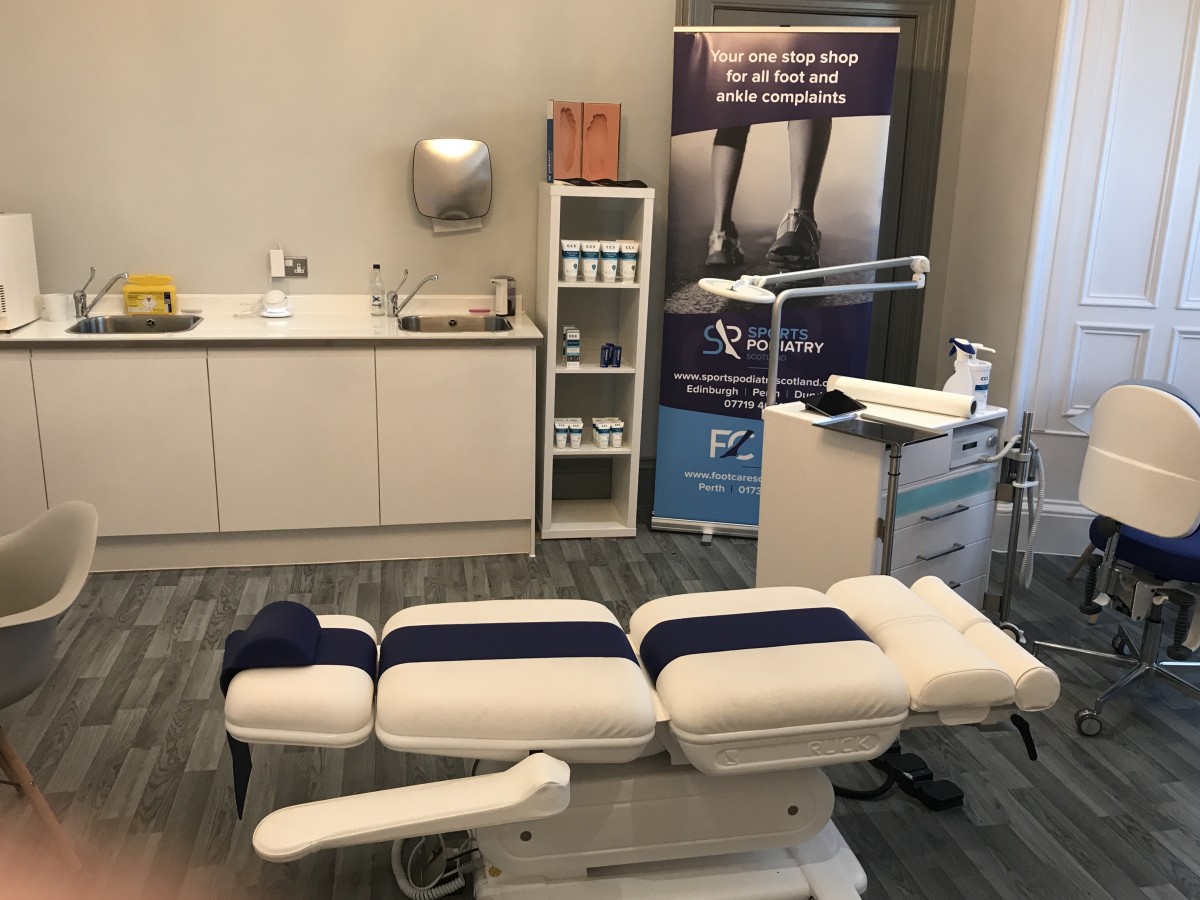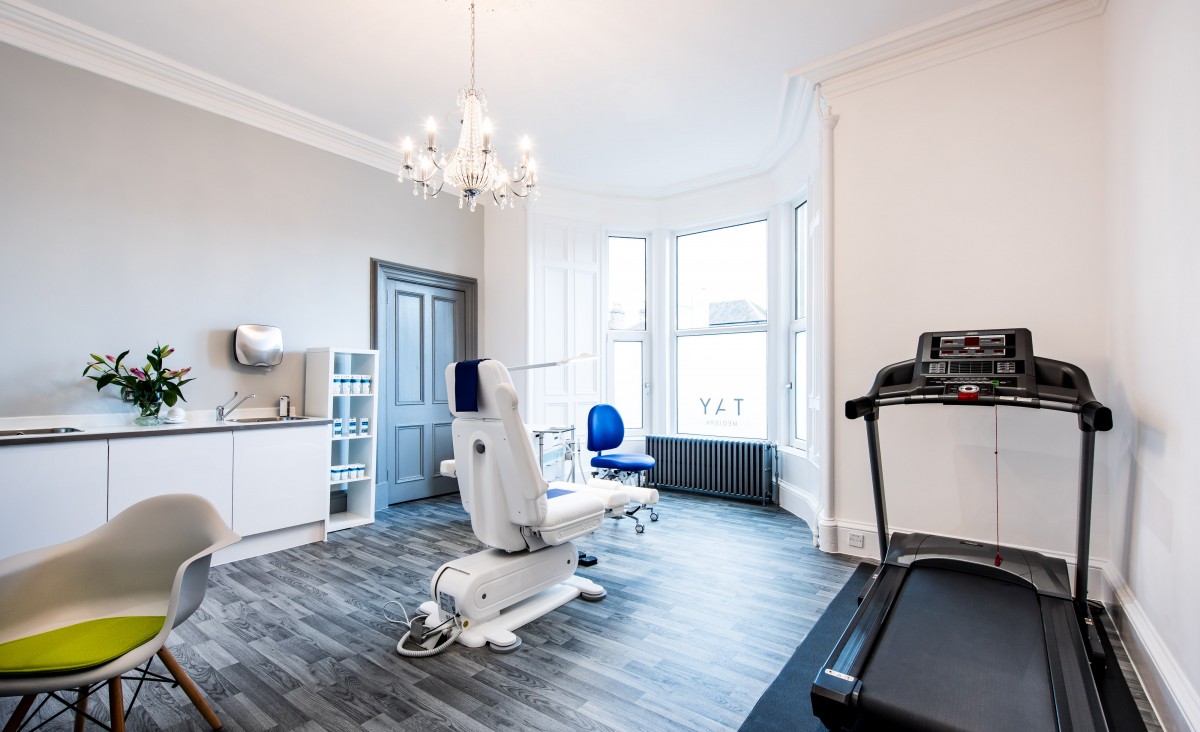×
The London Marathon has come and gone, and it’s that time of year again where everyone is inspired to get out running. For some, it will be a completely new experience while for others it will be a return after a break. Whatever your reason for putting on your running shoes, the one thing you want to avoid is a nasty injury!
Having completed a couple of half marathons a few years ago, I have set my sights on getting another two under my belt at the end of this year. So I headed along to meet Alastair Dall of Sports Podiatry Scotland to undergo the ‘runner’s MOT’. It’s an in-depth running specific assessment designed to pinpoint any problem areas where there is lack of muscle strength or a restriction in joint motion that may lead to an injury. The assessment includes a series of tests, a video gait analysis and then recommendations on footwear and strengthening and stretching exercises.
Alastair himself has over fifteen years’ experience in the NHS, including specialist roles in Biomechanics and Orthopaedics. He provides services to St. Johnstone Football Club and the Tayside and Fife Institute of Sport, as well as previously holding a post at Edinburgh University’s renowned FASIC sports medicine clinic.
With all of his experience, Alastair knows a thing or two about runners and their injuries. While we were discussing my own history of injuries, he shared some of the knowledge he’s gained in his many years working in sports podiatry.

“One of the main problems that runners have is they think that all of their training needs to be done by running – but they actually have muscle weaknesses and problem areas that should be strengthened in a gym environment.
Take Mo Farah for example – he will spend a lot of his time in the gym working on strength exercises. To run over distance you need to be strong physically as it puts a lot of strain on your muscles. One of the major causes of muscular and joint injury in runners is that they simply neglect this part of training.”
After I had given Alastair all of the information on my injury history, he began the assessment by asking me to do some simple exercises barefoot. We were joined by two physios from Caledonian Physiotherapy, who were shadowing Alastair and contributed to the MOT with their own expert knowledge. The exercises varied from one-legged squats to standing on my tip toes, as well as checking my balance. At this point, Alastair had already taken notes on a weakness found on one leg which he assured me was common.
The best way to get a clear picture on how you run is through video gait analysis, which was the next step of the runner’s MOT. First of all, I was asked to run on the treadmill barefoot at a steady and comfortable pace. Alastair recorded this on video using software which can highlight particular weaknesses in your body while showing your running technique. With the barefoot run, there was nothing too alarming noted apart from there being a slight weakness in the left side of my body, which Alastair had already alluded to during the early part of the assessment.
Then, I was asked to run at a slightly quicker pace with running trainers on. Alastair used this to see if there were any changes to my technique when wearing trainers and it helped him to make his recommendation on a particular type of running shoe to suit me. The video gait analysis was then played back on a monitor, so Alastair could talk me through his findings.

For the final step, Alastair conducted a few tests on the physio bed just to confirm what he had already discovered from the previous assessment exercises and the video analysis. He tested the strength of my left side, including the lower back and also my glutes – where he believed there was also muscle weakness. At this point the physios also added their comments on where they felt there was weakness and advised me on some exercises to reduce my risk of injury.
After completing the stages of the runner’s MOT, Alastair and the physios concluded that my left quad, lower back and my glutes were all weaker than the rest of my body which could lead to injury. He had suspected the findings from the very beginning with the initial assessment but confirmed this with the video gait analysis and physio bed tests. In terms of fitness, I am deemed more than capable aerobically of completing the half marathons but would benefit from additional strength training in the specific areas he outlined. I was given strengthening exercises to round off the runner’s MOT, and left with a new found knowledge on how to prepare my body for endurance running!
***
Live Active Leisure has launched a new campaign encouraging the residents of Perth and Kinross to ‘Travel the World with LAL’.
May 27th Wednesday 2020
Chrystal Matthan is the 24 year old netball player from Perth who was recently selected for the Scottish Thistles Long Squad!
February 27th Thursday 2020
Foundation trustee Charlie Gallagher recently handed over a £2000 cheque to Academy head of youth development Alistair Stevenson.
January 31st Friday 2020